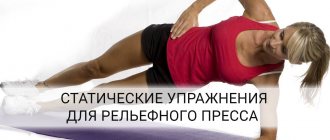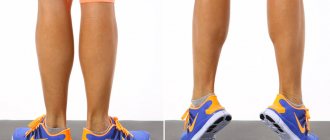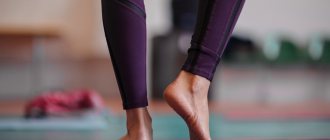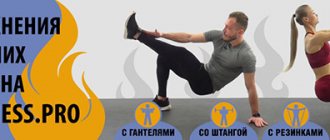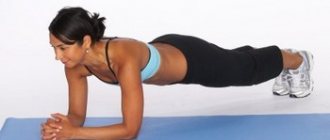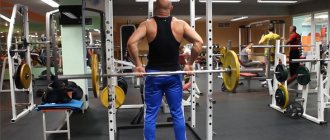A strong neck is not only a necessary condition for an athlete’s attractive appearance, but also evidence of his health. Men work on pumping this type of muscle to achieve beautiful proportions of the upper body.
Women use this type of training to increase skin elasticity, avoid the appearance of a double chin, and improve overall contours.
A healthy, strong neck provides good support for the spine, guarantees normal intracranial pressure, and prevents the development of migraines and spasms.
How to work with the neck muscles, and what mistakes to avoid
Before you start training, you need to clearly understand the anatomy of this organ and the types of muscles you will be working with.
All neck muscles are divided into:
- deep (lateral and medial), responsible for bending and rotational movements;
- median, taking on the functions of opening the oral cavity, the process of swallowing and speech formation;
- superficial, providing protection for veins during movements.
Most exercises are aimed at working out groups 1 and 3.
To work with the neck muscles, it is necessary to adhere to the sequential implementation of all stages of training, including:
- warming up;
- main complex;
- stretching.
Don’t forget about a number of rules that will help you avoid the negative consequences of training:
- No sudden movements.
- Smooth execution of all elements.
- Refusal of heavy weights (women generally work without them).
- Use of special simulators when possible.
The first lesson for beginners should be under the supervision of a coach or a more experienced athlete who is well acquainted with the elements of neck pumping.
Important! Beginners often neglect the first block, resulting in various types of injuries: vertebral displacement, pinched nerves or muscle strain. Subsequent therapy and rehabilitation can be long and painful.
Be sure to watch: Gallery image with caption: How to pump up your neck muscles at home: basic exercises Gallery image with caption: An effective way to keep your back and neck healthy: a selection of exercises Gallery image with caption: A selection of effective exercises to strengthen your neck muscles
Warm-up before neck muscle training
Whatever muscle group we work on, we first need to do a warm-up, and the neck muscles are no exception. Warm-up is necessary in order to warm up the muscles, disperse the blood, and avoid injuries, muscle spasms and overexertion.
Warm-up for the neck muscles is familiar to all of us from school physical education lessons. These are standard head turns left and right, head tilts up and down, circular rotations of the head in different directions, and so on.
When doing the warm-up, try to keep all your movements smooth and calm, do not rush, do not chase the speed of the exercise, otherwise you will only harm yourself. Do not perform more than five repetitions of each exercise on one side, as this can also lead to negative consequences.
List of exercises and technique
Complexes for working deep and superficial muscles are good because you can work with them both in the gym and at home. In most cases, they do not require the use of special equipment or training partners.
For the gym
Working in a gym is attractive primarily because of the presence of a coach who observes, points out mistakes and monitors the correct execution of the element. This is very important, given the increased risk of injury if the set of exercises is not performed correctly. The presence of special simulators and training partners plays an important role.
Experienced athletes pump up the neck muscles at the same time as working on the deltoid and trapezius muscles of the back and shoulder girdle. However, practice has shown that if you add several target elements for the neck muscles to the final stage of training, the visual effect will appear faster and better.
Such a mini-complex may include:
- Exercises with weights. This type is aimed at working almost all the main muscles, including the longus capitis muscle. Technique:
- lie with your back on a hard, flat bench, while the shoulder girdle, as well as the neck and head should be supported;
- cover the frontal part with a thick towel folded several times;
- Place a steel pancake on top of the material and, holding it with your hands, gently stretch the end of your chin to your chest.
The main thing is to do everything smoothly, without sudden movements, and choose the right weight. 3 sets of 6-8 approaches are enough. This item is recommended for men only.
- Pull by means of a strap.
This exercise can only be used in training by experienced, trained athletes. Also, to perform it, you need a simulator, which is a double-sided strap, one part is attached to the head, and the second is weighed down with a load. Element implementation method:
- take a stable position, leaning your body forward until a right angle is formed;
- when exhaling, smoothly lower down until the weight touches the floor surface;
- come back while inhaling.
The number of approaches is 2-3 with 6-8 repetitions in each. Strap rows are aimed at working the deep muscles of the neck.
This element can be performed in tandem with a partner. To do this, you can take a regular towel, place it on the back of your head, while your partner should grab the ends of the material and pull it down. The athlete resists the pressure for several seconds, tensing the neck muscles.
- Raising the head with a load.
The technique of this element is similar to exercise 1:
- take a “lying position” on your stomach on a hard surface of a bench, holding the shoulder girdle, as well as the neck and head, in weight;
- cover the back of the head with a towel folded several times;
- place a metal pancake on top and, holding it with your hands, as you exhale, gently stretch back, with the back of your head to your back.
The number of sets is the same as in the first element. For beginners, the steel weight can be replaced with a 0.5-liter water bottle. When performing, you need to have good muscle control, otherwise the risk of injury will increase significantly.
- Shrugs with weights.
Responsible for pumping the trapezius, a muscle that regulates the work of the upper back and neck. His technique:
- take a stable standing position, with your feet shoulder-width apart;
- pick up weights;
- fix your arms along the body;
- As you exhale, raise your shoulders, and as you inhale, gently lower them.
From the outside, this exercise resembles a shrug. 3 rounds of 8-12 repetitions are enough.
- Lifting weights in front of you or to the sides.
You need to do the following:
- stand up, keeping your body straight;
- take weights and press your hands to your body;
- slowly raise them forward and up (as you exhale) or to the sides and above your head, without bending your elbows;
- while inhaling, return to the starting position.
Most strength elements are performed in 3 sets with repetitions from 6 to 12 times, depending on the athlete’s level of fitness. Rest between sets is 2-3 minutes.
At home
There are many ways to build up your neck muscles without going to the gym.
Examples of the simplest exercises:
- Place your palm on the left side of your head up to the earlobe line and begin to apply pressure in this direction, tensing the neck muscles. Then repeat the same with the other side. Exposure time is from 30 to 60 seconds. Number of repetitions – 8-10 times.
- One variation of this exercise is to apply pressure to the hands holding the chin. The number of sets is the same. The elements must be performed slowly and carefully; with sudden movements there is a risk of pinching nerves.
- Another exercise requires a position similar to push-ups. When performing, you need to make longitudinal movements with your head, moving it as far back as possible and touching the parietal part of the floor surface as you lower it forward.
Important! The number of repetitions should not be less than 20. Beginners can use their hands for additional support. Experienced athletes put them behind their backs and repeat the element 30 times.
At home, rolling stones have also worked well. To do this you need:
- take a vertical position with your feet at a distance twice the width of your shoulders;
- bend forward, resting the top of your head on the floor surface;
- start rolling in directions: sideways and back and forth.
To achieve the best results, it is necessary to combine different sets of exercises. Also, do not forget about the daily break between workouts, during which muscle tissue is restored.
The optimal number of sets is 3 times 15-20 repetitions. At the same time, we must not forget that an equal number of approaches must be performed on each side of the neck.
is it possible to pump up your neck?
Joseph 05/02/2016 02:54
It's not that hard to pump up your neck
I first realized the benefits of a strong neck when I joined my high school football team. Everything was just fine until I took the ball on my head. After that, it was splitting all day long.
The result of this painful experience was the purchase of a cassette with courses by Charles Atlas - I began to do some exercises in order to pump up my neck.
From then on, heading the ball was no longer a problem for me.
Later, when I joined the Wichita Falls YMCA wrestling team, I learned once again how important having a strong neck is not only for success in sports, but also for preventing injury. The coach forced us to do a wrestling bridge.
Since at that time I was already involved in weightlifting, this exercise was easier for me than for those who had never trained with weights. When I started boxing and playing football at SMU, wrestling paid huge dividends for me.
I can absolutely say: if you have a weak neck, then you have no business doing these two sports - it’s simply dangerous.
From 3000 rubles discount 5%
and free delivery in Moscow.
A gainer with a high content of L-glutamine is the key to successful recovery after strength training RUB 738
.
Attention!
Premium high-protein gainer with ZMA complex for gaining lean muscle mass RUB 4,918
.
Sports nutrition wholesale in Russia and retail in Moscow.
Anyone involved in team sports should definitely shake their neck. Sometimes the future of an athlete depends on its development.
However, in sports such as tennis, running or swimming, athletes rarely perform neck exercises.
They do not see an obvious connection between its strength and their athletic performance, because the neck is responsible for the stable position of the head during movements, and the outcome of the game - victory or defeat - can depend on this.
More details
Since ancient times, a man's neck has been considered a kind of litmus test for an athlete. Wrestlers, gymnasts, and just strong guys have always had thick and strong necks. Logically, a strong man cannot have it thin and fragile. If you care about your appearance, then be sure to do exercises to develop your neck muscles 1-2 times a week.
Since ancient times, a man's neck has been considered a kind of litmus test for an athlete. Wrestlers, gymnasts, and just strong guys have always had thick and strong necks. Moreover, once upon a time in sports this part of the body was given more attention than it is now.
Not surprising, because even in the last century, exposing your body naked was considered uncivilized, but what the head was attached to was always clearly visible above the collar of the shirt. Some athletes have developed their necks to incredible levels. For example, Zaikin I. tied a metal scrap around her.
Circus gymnasts held large weights in their teeth without bending their heads down. Sometimes the neck muscles are called the “crown of the figure,” and for good reason. This part of the body frames the upper half of the torso. Logically, a strong man cannot have it thin and fragile. It's ugly and unnatural.
By the way, this is partly why in bodybuilding neck measurement is included in the general formula for calculating the harmonious development. If you care about your appearance, then be sure to do exercises to develop your neck 1-2 times a week.
Important!
Unfortunately, some athletes approach the development of the cervical muscle group incorrectly, which leads to dangerous injuries. Below we will look at how to “pump up” it correctly.
More details
Every gym goer dreams of having a great torso, muscular back and big biceps. And only when the neck begins to fade compared to other muscle groups or when the athlete gets injured when performing the exercise incorrectly, only then does he begin to think about how to pump up his neck .
In martial arts, a decent amount of time is allocated to training this muscle group in order to prevent unwanted injuries during a fight. Can you imagine a wrestler or boxer who has an underdeveloped neck? That's right, it's better not to.
What neck muscles need to be trained?
You need to know this because it is not clear how you can effectively train a certain part of the body without having any idea what muscle groups it consists of.
On the subject: How to pump up your shoulders with push-ups
For example, when training your arms, you understand perfectly well what biceps, triceps, brachialis, and forearm are, and you know how to recognize whether a muscle has been properly loaded or not.
In order for neck training to be just as effective, you must initially know which muscle groups are being trained and where they are located.
To maximally strengthen and enlarge the neck, it is necessary to train the muscles that are most involved in protecting the spinal column and rotating the head:
1. Sternocleidomastoid muscle. Located in the front of the neck, when viewed from the front it forms the appearance of a Latin letter V.
2. Wide trapezius muscle. Performs two functions: turning the head and protecting the upper spine.
3. The muscles of the hyoid bone, which are located directly under the chin.
The neck is very easy to injure, so the muscles of this part of the body must be trained with extreme caution..
Advice!
The main thing is not to perform jerky movements and do all recommended exercises in a smooth manner with light training weights.
If you ignore the above recommendations, you risk getting an injury that will seriously and permanently knock you out of the training process.
https://youtu.be/8F_5drFoq0w
There are three types of exercises to increase and strengthen the neck muscles.
More details
Michael
March 23, 2013
Before I didn’t shake my neck, I couldn’t stand on my head, but now I’ve been doing it for only 1 week (with weights), and I’ve learned to stand on my head. Guys, shake your neck, the bigger your neck, the more powerful you look)))))
Alexander
December 25, 2012
get on your knees. forehead - on a chair/stool, resting your hands on the floor. remove your hands from the floor for 2-3 seconds. don't be overzealous. Just gradually increase the load day by day. and everything will be ok!
Dima
February 24, 2012
There are special caps (you can sew it yourself) for training the neck muscles. Dense fabric is sewn to the cap in the temporal region of the head (in the form of a loop), to which a weight is attached, the exercise is performed while sitting, tilting the head forward and lifting it up
Captain obvious
05 August 2011
Well, I saw in a video how Mike Tyson did neck exercises like that on a bridge. Looks like he's alive.
Lyosik
July 27, 2011
You lie down on a bench (or somewhere else) on your stomach, so that your head hangs down, put a rolled up towel on your head, take a pancake, place it on top of the back of your head, lift it up and down, supporting it with your hands. Same thing on your back, damn it, you lay it on your forehead. Using the same principle, lie down on your side.
If there are no pancakes, you can press with your hands, clasping the back of your head, lock your hands back and, resting your fists or palms on your chin, move forward, also to the sides. You can do all this with your hands while standing.
And from all these rotations and perversions you can be left not only without a neck, but also without a head.
Stepan
May 18, 2011
Attention!
You put your palms to your forehead and press your forehead into them, only so that the neck does not move, but tenses statically, then to each temple, then to the back of the head, so many times, in the end the neck will resist a blow to the head very well.
Baga
November 19, 2010
The best way is head and legs, arms on the back, forward and backward. right to left, all muscles sway
Roma
01 November 2010
A great way for those already practicing. You can also carry a weight across yourself in such a bridge (head-legs): left-right-left. from floor to floor. A universal way to maintain the strength of the whole body. The exercise is difficult, you need to wait several hours after eating - there is a risk of a hernia. )
Recommended articles: how to quickly knit a scarf with your hands, tender thigh muscle
Rulya
September 19, 2010
More details
How to pump up your neck muscles. training features
If you don’t know how to pump up your neck at home, you need to familiarize yourself with the recommendations so that the resulting workout is truly effective.
To increase neck volume, you need to exercise a couple of times a week for at least 10 minutes. The best option is 10-20 repetitions.
Exercises should be performed at a slow pace. Moreover, at the beginning of training only light weights should be used.
If you are shaking your neck for the first time, do not take a lot of weight right away - it should be increased gradually to avoid injury.
During the exercise, do not jerk your head - try to move smoothly.
When tilting your head to the sides, you can easily injure your neck, so you need to control this process. If you feel discomfort in your neck while performing these exercises, eliminate them from your workout for a while.
The training should take place without discomfort or pain.
When performing the “moving forward and backward with your head” exercise, you need to move strictly in a straight line and not tilt your head to the sides.
Exercises for warming up before training https://ifeelstrong.ru/manworkouts/exercises/razminka-pered-trenirovkoj.html. Thanks to a good warm-up, the effectiveness of the main workout increases many times over.
On the subject: How to pump up the outer biceps
Proper neck warm-up
Before any workout it is necessary to warm up, this case is no exception.
Warm-up must be correct, this is the only way to protect your neck from various injuries, sometimes very serious ones.
With the help of a warm-up, blood is dispersed through the peripheral vessels precisely into those sections that will subsequently be loaded - this way you can avoid overexertion or muscle spasm.
Remember, you cannot stretch your neck at high speed!
Important!
One wrong warm-up probably won't lead to bad consequences, but doing it consistently can lead to serious injury.
More details
Source: https://myhomefitnes.ru/post/4670-mojno_li_nakachat_sheyu
Mandatory warm-up
You can avoid health problems in the process of pumping up your neck muscles only by correctly approaching all stages of the training. It is necessary to start classes with a warm-up or warm-up. These simple exercises are aimed at maximizing stretching and relaxation of the neck muscles. Their task is to prevent possible injury to this organ.
The most common elements:
- Lateral bends and rotations.
You need to sit down, keeping your body straight, tilt your head to the side, trying to touch your ear to your shoulder, hold for a few seconds and repeat the tilt in the other direction. Shoulders should be down, back straight.
Variation: slowly rotating your head, try to touch your chin to your collarbones, the side of your head, shoulders, and pull the back of your head back as much as possible.
- Turns.
Starting position - sitting straight, turn your head to the side as far as it will go, while your shoulders and body should remain motionless.
All heating elements are performed at least 10 times. Each exercise should be done smoothly, but with effort, fixing the tension at the peak point. To enhance the effect, you can use your hands as additional pressure when turning or bending. Weights are not used during warm-up.
Theoretical part of the program
The crown of every athletic body is, of course, the neck. Developed neck muscles indicate a serious level of training of the athlete. After all, in order to pump them up, the owner of a strong and strong neck had to seriously sweat in the gym. You will have to do the same if you want to pump up what is called the “bull neck”.
It’s worth making a reservation right away and warning you that training the neck, as well as other muscles, will be successful only if it is present in your complex. Such as, for example, sitting and lying barbell presses, squats, deadlifts, pull-ups and others. It is they, due to their complexity and multi-joint nature, that will involve not only the target muscles, but also additional ones, including the neck muscles.
As for isolating exercises, as in any training program, they will only be an addition to the heavy base. Don’t be fooled into thinking that simply bending your neck with a load will make it much bigger and stronger. It is not true. Remember, muscles will only respond to growth to a basic multi-joint load.
For example, according to scientific data, such a basic exercise as the bent-over barbell row uses, in addition to the main muscles, that is, the back muscles, also the biceps. It would seem that the biceps here only help to carry out the movement, but in fact, the degree of load on them increases significantly. The power of their contraction increases by about a third if we compare this exercise with standing biceps curls. Although the latter puts a more direct load on the biceps. But the bent-over row benefits from a significantly higher “basicity” indicator.
In general, we will not go into much detail into physiology and analyze this example at a scientific level. It just needs to be said that with neck training things are the same. The degree of load on it becomes maximum only when it works in basic exercises in tandem with other muscles. Isolating exercises for the neck will serve as auxiliary exercises to the basic ones, but by themselves they will have virtually no effect. That is, they cannot be independent. Based on this, we will offer you a special training program for all muscle groups, but with a significant emphasis on the neck muscles. So let's get started.
Approximate training plan for pumping up the necessary muscles
The set of exercises for the neck muscles consists of 3 blocks:
- warming up;
- basic pumping;
- stretching.
The first and last stretches should not be skipped, as warming up will prevent injuries, and the final stretching will increase the speed of muscle fiber recovery.
The main stage may be the following complex:
- Resistance exercises (using your arms):
- bending under pressure to the sides, forward and backward. 3-4 sets are performed with fixation from 5 to 20 seconds (depending on the athlete’s level).
- Elements with weights:
- with disc (6-8 repetitions in 3 rounds);
- with a strap or head helmet (2-3 sets, each no more than 8 repetitions).
- Exercises with dumbbells:
- shrugs with weights (“shrugs”);
- lifting equipment to the sides and forward. Both types of exercises are performed in 3 sets with repetitions from 6 to 12 times.
The break between elements is 3-4 minutes. Between training sessions – from 24 to 48 hours.
Other exercises
It should not be forgotten that many compound exercises also involve the neck muscles (for example, deadlifts, shrugs, etc.). In addition, there are wrestling methods for pumping up the neck, such as the back wrestling bridge. This is undoubtedly an excellent exercise for increasing muscle endurance, but it should never be performed by a beginner without the supervision of an experienced trainer, as performing the exercise incorrectly can result in serious injury. In addition, it is unlikely to lead to significant muscle growth.
In addition, you can perform exercises not with a plate, but with a special strap for traction . A weight is attached to one side of this strap, and the other is fixed on the athlete’s head.
Remember that all exercises to develop the neck muscles should be performed with a small amplitude.
Rest and recovery
The next day you may experience a feeling of muscle fiber tension. This is a sign of quality and hard training. But not sharp, but nagging pain immediately after finishing exercise may indicate the presence of a sprain.
Acute pain and the inability to turn the head are a signal of the need for an urgent visit to a traumatologist, as this may be a sign of vertebral displacement.
At the end of the workout, you should not forget about the final stretch. Its elements are similar to warming up, but they are performed very slowly, without tension.
You can relax your neck muscles with massage. However, even then, the time required for recovery will not be less than 20 hours. It is best to conduct classes 2-3 times a week. Such intervals will allow the muscles to properly recover and adapt to the load.
Training program with an emphasis on the neck
Theoretically, we have more or less figured out how to pump up the neck, but as you know, practice is the best teacher. Therefore, let’s proceed directly to the training program itself and sets of exercises.
The training cycle includes 4 workouts. In other words, it will be a 4-day split. You will pump almost all the muscles of the body, and not just your neck. But the exercises will be selected in such a way that, in addition to other muscles, they include the neck muscles in the work as much as possible. Plus, each workout will include an isolating load on the neck in order to “finish off” these muscles with direct impact, so to speak, and thereby trigger mechanisms for increasing the strength and mass of your neck.
You will train every other day. That is, if you start your cycle on Monday, then the next workout will be on Wednesday, the next one on Friday and the next one on Sunday. Total of only 4 workouts per week. Next, you should give yourself 2-3 days of rest, focusing on your well-being.
Accordingly, your next weekly cycle will begin not on Monday, but on Wednesday or Thursday, and again you will need to train every other day, ending 4 workouts with 2-3 days of rest, and so on. The total duration of this training program is 12 weeks, that is, you must complete 12x4 = 48 workouts. After which, you can move on to your regular training regimen, but with a stronger and much larger neck. After six months, this program can be repeated.
Please note that the number of repetitions and approaches in many exercises is different and varies within different boundaries. Keep this in mind when monitoring the intensity of your workout. If you are full of strength and energy, then do more sets and repetitions, while reducing the rest time between sets. If you feel that such a rhythm is not within your power, then stick to the lower limit of repetitions and repetitions, and increase the rest time between them. In any case, customize this data personally to suit your abilities.
Main conclusions
The neck rarely acts as a separate object of training; most often it is pumped during exercises to develop the shoulder girdle or strengthen the back:
- Warming up is a necessary stage of neck training, without which exercises will not be effective and safe.
- Pumping up this type of muscle can be done at home, as it does not require a certain type of equipment.
- Proper technique for performing elements is the key to the absence of injuries in classes.
- Neck training allows you to achieve beautiful proportions in men and prevent sagging skin in women.
- Exercises with weights are only suitable for the stronger sex or professional bodybuilding athletes.
Trainings aimed at developing the neck muscles do not have a wide variety of elements. However, this set is enough to strengthen them and maintain a healthy spine.
Why does a kickboxer shake his neck?
Have you ever wondered why beginner kickboxers float from light blows to the head, while champions can withstand blows many times more powerful?
You can talk about experience, a strong jaw, the right moment - but I’d rather talk about the neck muscles. This is the shortest way to give yourself a “chin of steel.”
Few athletes pay due attention to the neck muscles. But a pumped-up neck is beneficial not only in wrestling. In kickboxing, for example, the neck absorbs the force of a knockout blow, after which the head does not lean back too much and the brain is less concussed. As a result, the kickboxer avoids being knocked out and is able to continue the fight.
We have decided on the benefits and necessity of having toned neck muscles. Now let's move on to the methods.
You can pump up your neck at home without special equipment, but you need to do this with extreme caution. If your neck muscles are weak, you should not immediately try to load them to the maximum - there is a high risk of serious injury.
A little anatomy
As you can see, the largest and most noticeable muscle in the neck is the sternocleidomastoid. She tilts her head forward and to the side. The scalene muscles also provide lateral tilt of the head. Tilt of the head back (extension of the neck) is given to us by the splenius muscle and the trapezius muscle.
By the way, about trapezoids. If you want to pump up a big neck, then you should not forget about them. details on how to do this.
Thus, it is clear that to fully pump up the neck you need to perform 3 movements:
- Bend the neck forward (neck flexion),
- Bends back (neck extension),
- Lateral bends.
Precautions and contraindications
Exercises to strengthen the neck muscles are among the most traumatic, so their implementation must be careful, smooth and thoughtful. For beginners, it is better to enlist the support of an experienced trainer who will hone the technique and provide backup.
People with cervical osteochondrosis in the acute stage should not do neck exercises, especially with weights; for hypertension and tachycardia; for any infectious diseases.
Many athletes, wanting quick results, wonder whether it is possible to pump their neck every day. Experienced athletes believe that 5-6 short workouts per week, of medium intensity, have a much better effect on the neck muscles than 2-3 heavy ones.
If you experience severe pain, limited neck mobility, or a sharp jump in blood pressure, you should urgently stop training and consult a doctor.
Workout 3
Bench press
Upper block pull
Try to make your grip as wide as possible and pull the weight solely with the strength of your back muscles.
Incline Dumbbell Press
Make the trajectory of the movement as if in an arc, so that at the top point your dumbbells almost touch each other. At the bottom, the distance between them should be as maximum as possible.
Shrugs with a barbell or dumbbells
Alternate this exercise from workout to workout, performing it with both a barbell and two dumbbells.
Lateral head lifts
Perform this exercise similar to neck curls while lying on your back. But only this time you need to lie on your side and do a given number of repetitions on both your right and left sides in one set. The number of repetitions and approaches is the same.
Workout 4
Barbell Squats
Perform the exercise with your head slightly tilted up. Keep your back extremely straight. To make this happen, choose the appropriate weight for yourself.
Ab roller
You need to perform a total of 100 repetitions, but whether you do this in one set or ten depends on your level of strength training. Ideally, of course, this should be done at once, but if the strength of the press does not allow you to do this, then break this hundred into several approaches.
Lying Neck Curl
The best exercise for the neck muscles, so it should be done twice per cycle - in the second workout and in the fourth.
Now we have figured out practically how to pump up the neck. Don't forget about a good warm-up before each workout, otherwise you risk getting injured. Follow the rules and recommendations given above and after 12 weeks your neck will change significantly in size. Just have patience and strength, it is in your own interests.
Well, that's all for now, comrades. If something remains unclear, it doesn’t matter, ask your questions in the comments below. Also add our website to bookmarks and subscribe to the newsletter so as not to miss new interesting releases and training programs. Good luck to you!
To pump up your neck means to get strong and developed muscles in the most visible part of the body. Pumping up your neck is quite simple. To do this, you don’t have to go to the gym—at home is enough.
Neck trainer - recommendations for use
If you train in a weighted helmet outside in the winter with a sports hat on, or use a neck trainer individually in a bandana, then there is no point in frequently removing the sealing pad for hygienic treatment. It’s another matter when a weighted helmet is purchased by a fitness club or boxing gym for intensive use by many athletes. In this case, it becomes necessary to observe ordinary hygiene rules. For hygiene purposes, the sealing lining is detached from the main part of the helmet. To do this, you need to loosen all the adjustment straps and wipe the lining from sweat.
Sealing lining of the neck trainer The neck trainer - helmet is made using weight belt technology with weight adjustment. The only difference is in the method of fastening to the body and the seal. The sealing lining of the helmet serves to neutralize the sensitivity of metal weights to the head. The composition includes felt and artificial leather. Any weight on the body brings inconvenience, and especially on a hard head. Felt significantly reduces the pressure of weights, and the durable artificial leather with which it is lined makes it easy to perform a hygienic procedure - wiping the removable lining from sweat. It is better to clean sweat with a sponge or a damp cloth than to wash it, since after washing the felt inside will take a long time to dry. Important: a properly secured sealing lining inside the weighted helmet is the key to a comfortable workout. What not to do - If you attach the lining straight to the unfolded helmet and then roll it into a ring, the lining will be refracted in several places and the inside of the helmet will become not round, but angular in shape . The fact is that the wide Velcro when folding the weighted helmet into a ring will not allow the sealing lining to curl exactly in a circle. It will be tough on the head and the neck trainer will shrink in size. Starting a lesson in such equipment will discourage you from further training.
How it should be - A correctly secured lining should be in maximum contact with the inside of the neck trainer over its entire plane. There are several mounting options - whatever suits you. The sealing pad can be inserted in a circle into the helmet folded into a ring, pressing it tightly with your fingers. You can also attach it suspended by rolling it together with the helmet. It is not difficult. You only need to do this a couple of times. Train for your health!
Workout 2
Deadlift
Perform the deadlift as technically as possible. This is the only way you will make your muscles work harmoniously and in tandem with each other. Which will have a positive effect on the load in general and on the load on the neck muscles in particular.
Swing forward with a kettlebell
An excellent exercise for the shoulder muscles, but, as you understand, the neck is not deprived of the load here. If your gym doesn’t have weights, you can perform this movement with dumbbells; they should definitely be there.
Hanging Leg Raise
If you cannot lift your legs straight, then do this exercise with your knees bent, it will be easier. If things are really bad, then do it lying on the floor
Lying Neck Curl
Lying on a bench, place a barbell disc on your forehead. Lie down with your head hanging off the bench. Choose the weight according to the strength of your neck. We raise our head powerfully and quickly, lower it under control and slowly, while making sure that only the neck is working.
Workout 1
Standing barbell press
Do this exercise exclusively from the chest. This way you will load your neck muscles to a greater extent.
Pull-ups on the bar
If it’s easy for you to pull yourself up with your own weight, then wear a special weight belt. If, on the other hand, you cannot complete the specified number of repetitions, then either use a special pull-up machine or perform the maximum possible number of repetitions in each set. It’s okay if it happens even 1-2 times, the main thing is that you have achieved your maximum and with each new workout it will grow.
Dips
Choose wide bars for yourself and perform push-ups with an emphasis on your chest, that is, tilting your body slightly forward. Just like with pull-ups, you can attach a weight to your belt if you can easily do more than 12 repetitions with your own weight.
T-bar row
The weight in this exercise should be more than serious, but within reason, of course, so that the technique does not suffer. Perform the deadlift correctly, using your back muscles, not your arms. At the end point, squeeze your shoulder blades together and hold the weight for a moment. This will additionally make your neck muscles tense.
Neck extensions with weights
The final exercise of the complex will be an isolation exercise for the neck. Select a weight that allows you to correctly and technically complete 15-20 repetitions. At the same time, a strong tension should be felt in the neck.
Pumping up your neck in the training room
Exercise with a clamp
It is performed with special equipment - a “collar”. It can be purchased by going to a sports store; you can do it yourself.
The clamp represents, for example, a cap on the head, the bottom of which is reinforced. A strip of strong material is sewn to the belt, approximately in front of the ears.
Preparation: put the headband cap on the head; lean forward from a sitting or standing position; attach (by any possible method) an additional weight to the collar band.
Exercise: slowly raise the head up to the possible limit; for 1...2 sec. delayed; exhale and lower (just as slowly) your head down until your chin rests on your chest.
Features: movement when raising and lowering the head strictly in a straight line; head deviations are extreme.
Neck flexion
For the exercise you need a flat bench and a barbell plate.
Preparation: lie on the bench with your back; head – outside the seat; take the pancake with your hands and place it on your forehead, having previously placed, for example, a towel on it.
Exercise: slowly lower your head down; inhale, raise your head and exhale.
Features: start moving very slowly; The pancake is constantly held with your hands; lowering the head as much as possible.
A similar exercise can be done while lying face down on a bench.
Exercise with a partner
This exercise is one of the most effective. Its difficulty lies in the adequacy of a partner, who must participate in it carefully and responsibly. Otherwise, everything can lead to a neck injury.
Preparation: sit on a bench, bend your body to your knees and rest your chest on them; your partner puts his hands on the back of your head.
Exercise: a partner puts a lot of pressure on the back of the head with his hands; the force of his hands should be such that you can lift your head up with maximum muscle tension; after lifting, your partner continues to press, and you, lowering your head, resist such pressure.
Features: head deflection up and down should be as wide as possible.
The exercise is also performed from a sitting position. In this case, the head tilts to the sides. A partner helps her move like this, and you resist the load.
Exercise with a towel
Preparation: sit upright; fold the towel several times, cover your head with it, and hold the free ends with one hand.
Exercise: tilt the head back and forth, right and left; in this case, the towel creates resistance to such movements.
Anatomy and function of the neck muscles
The neck consists of many muscles, forming three large groups - deep, median and superficial. Obviously, these muscles are involved in turning and tilting the head, and also keep it in an upright position. In addition, they are involved in the processes of swallowing, breathing and pronouncing sounds. For example, the scalene muscle of the neck raises the ribs when inhaling, and the digastric muscle is involved in chewing food and swallowing.




